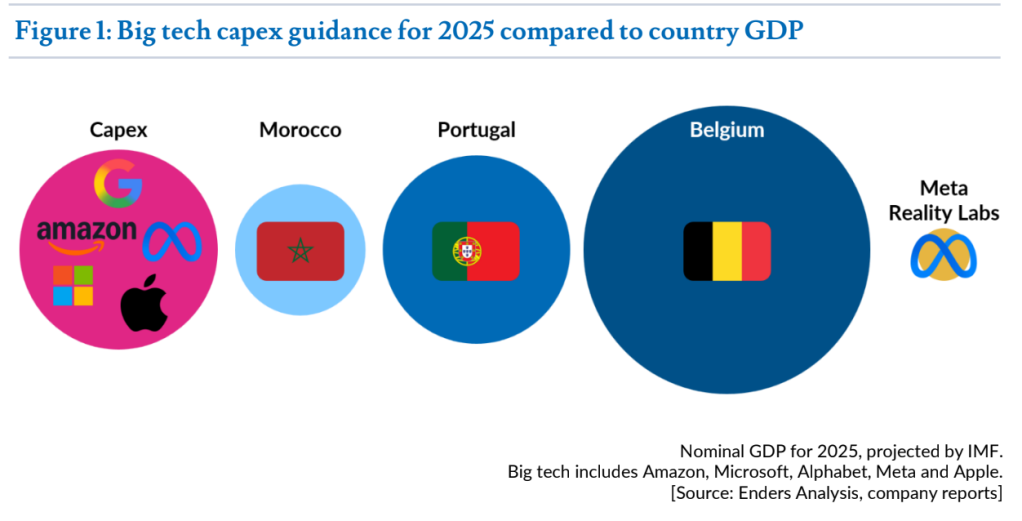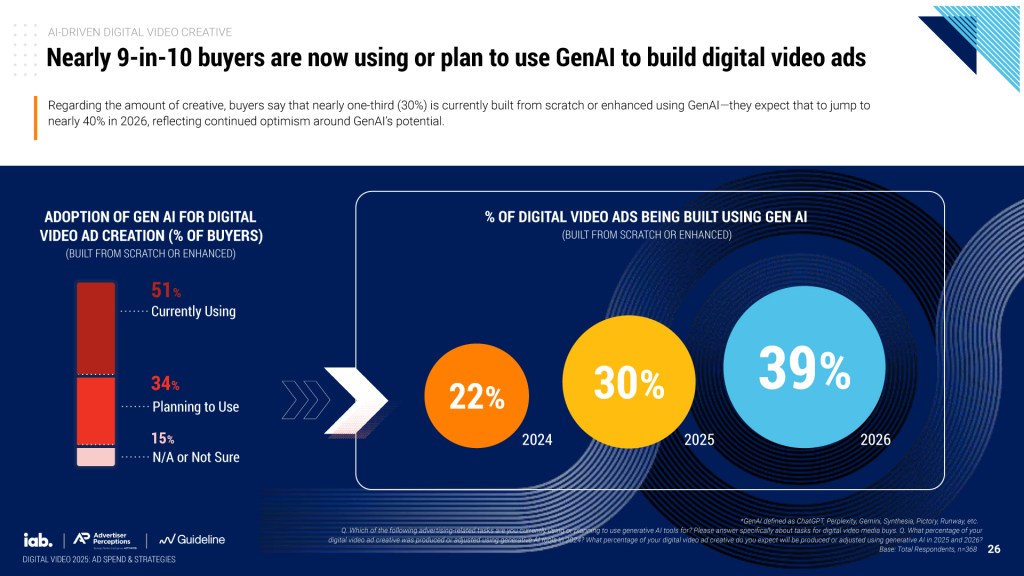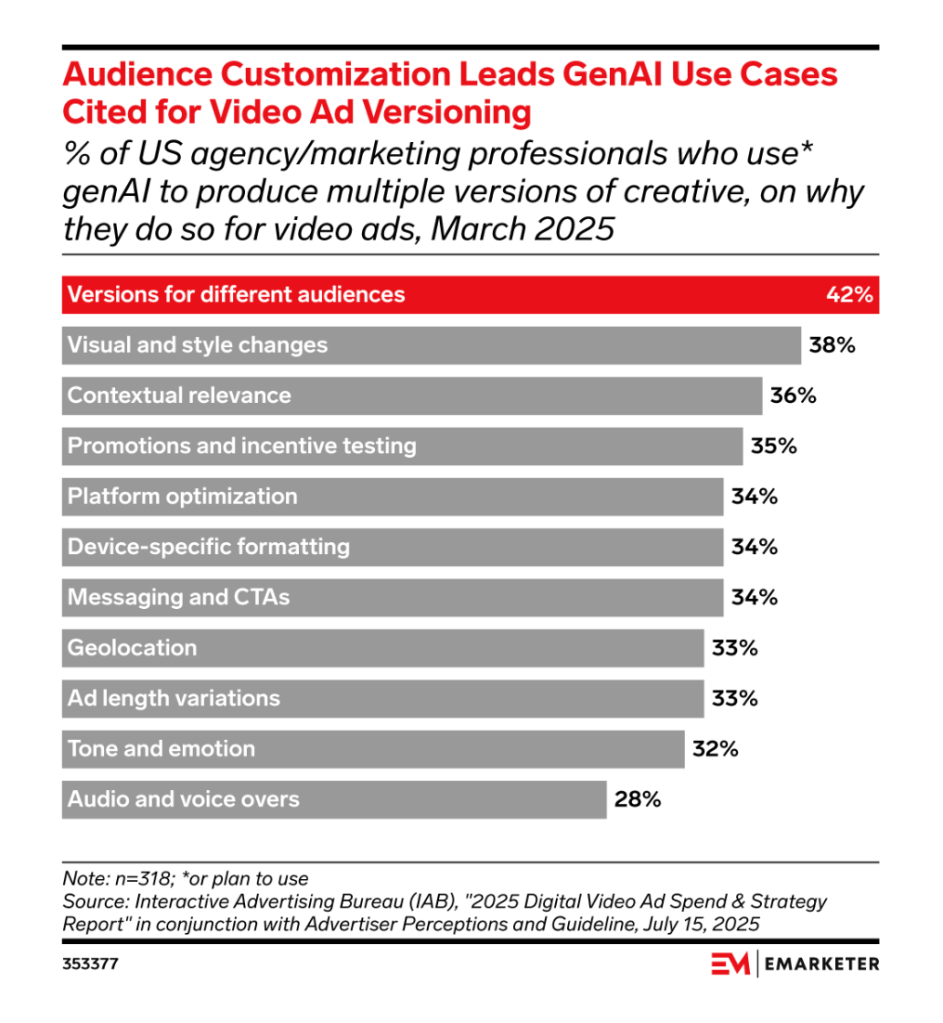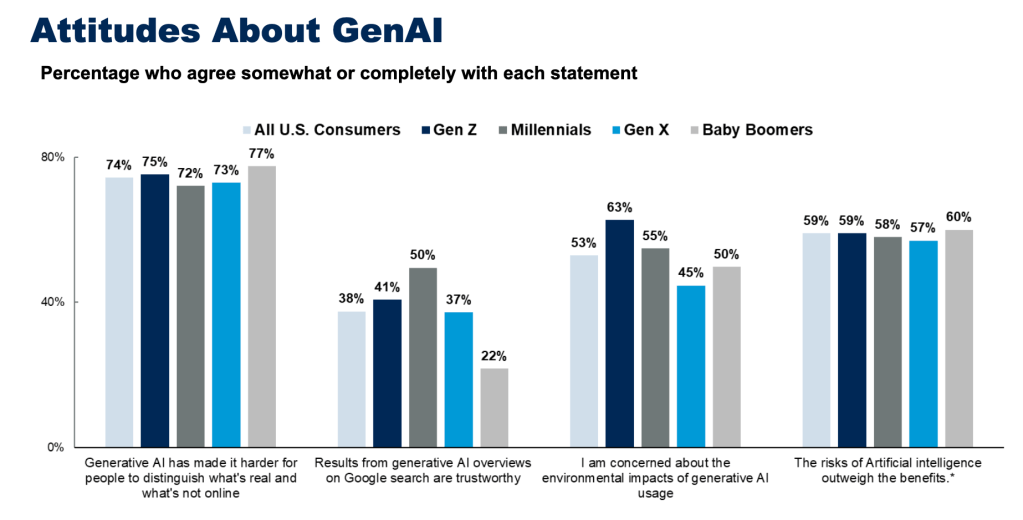In Graphic Detail: AI adoption increases, but U.S. consumers are still wary

For better or worse, generative AI has become a tech the industry can’t escape. Whether it’s taking over processes, agentic assistants or a way to scale productivity and creativity, AI is usually involved somehow. Now that generative AI is in its hype mode, the next stage of the AI journey is anyone’s guess.
To understand how we got here, Digiday has charted the rise of generative AI, big tech’s investment into AI as well as top use cases and consumer sentiment.
AI was always important, but generative AI has changed the game
While AI is having a moment right now, let’s not forget the actual tech was being used for a long time. Think trend predictions, sorting data, improving marketing or even algorithms — all things most agencies relied on, but never thought twice about how it was actually done. The tech was used by experts, but adoption across entire companies was still relatively slow.
In 2017, around 20% of companies were using AI in at least one business function, and this grew to around 55% in 2022, according to McKinsey’s seizing the agentic AI advantage report.
But from 2023 onwards, generative AI exploded in usage very quickly. Around 70% of companies are now adopting the tech widely across departments, even though its real economic benefits haven’t fully kicked in yet, per McKinsey.

Big tech’s investment into AI is huge
It’s no surprise that big tech platforms are leading the way by ploughing billions of dollars into the technology in a bid to become pioneers and leaders in the space, despite economic challenges like tariffs or market uncertainty.
According to Enders Analysis’s recent report, Where will AI land? Platform wars, advertising reset and B2B game changers, the combined capex (capital expenditure) of Amazon, Google, Microsoft, Meta and Apple is an aggregate total of around $340 billion in 2025 for building AI infrastructure.
To understand just how significant that investment is, Enders’ report noted that it’s already roughly more than the annual economic output (GDP) of entire countries like Morocco and Portugal, and it’s already on the path to match Belgium’s annual GDP in the future.

Most advertisers are embracing generative AI to create video ads
Gone are the days when marketers would spend hours, sometimes days to create video ads for digital campaigns. Now thanks to AI, most (86%) of those same execs are starting to embrace the technology, according to the Interactive Advertising Bureau’s (IAB) 2025 Digital Video Ad Spend & Strategy report released last month, which had used Advertiser Perceptions to survey around 368 industry execs anonymously.
According to the trade association, while just over a third (34%) of buyers currently plan to use generative AI tools, more than half (51%) are already using them.
Last year, just under a quarter (22%) of all digital video ads were being created using generative AI tools, according to the report. By the end of this year, 30% of all digital ads are expected to be created using those same tools, and in 2026, that figure is expected to increase again to 39%, per IAB.

Audience customization is top of the list for why U.S. ad agencies use generative AI
Just under half (45%) of marketers said that audience customization is the top reason for using or planning to use generative AI tools when producing multiple versions of video ads, according to eMarketer, citing an Interactive Advertising Bureau (IAB) survey.
This was followed by visual and style changes (38%), contextual relevance (36%) as well as promotions and incentive testing (35%).
The least favorable reasons for using or planning to use generative AI tools when producing multiple versions of video ads according to more than a quarter of respondents was audio and voice overs (28%) as well as tone and emotion (32%).

U.S. consumers aren’t won over generative AI (yet)
While generative AI might be becoming ubiquitous, it seems consumer sentiment remains wary.
Most (74%) U.S. consumers said they believe generative AI has made it much harder for people to distinguish what’s real and what’s not online, according to Gartner’s Insights for CMOs: 2025 U.S. Consumer Outlook by Generation report. Broken down, that’s felt by Gen Z (75%), millennials (72%), Gen X (73%) and baby boomers (77%).
Generally, most (62%) U.S. consumers don’t think Generative AI Overviews on Google search are trustworthy, either, according to Gartner. Broken down, only 41% of Gen Z think the results are trustworthy and 50% of millennials feel the same. Additionally, only 37% of Gen X and 22% of baby boomers equally feel those generative AI results are trustworthy, per the report.
More broadly, more than half of all U.S. consumers said they are concerned about the environmental impacts of generative AI usage (53%), and the risks of the tech outweigh the benefits (59%), per Gartner’s report.

More in Marketing

After watching X’s ownership issues play out, marketers brace for TikTok whiplash in 2026
TikTok’s ownership drama has echoes of X (formerly Twitter), but ad performance has kept marketers for fleeing—for now.

‘There’s no room for purists’: Generative AI is altering the agency junior talent search
AI is altering agency business models. It’s altering the skills they’re hiring for and where they’re hiring them from, too.

For platforms, here’s what’s not going to happen in 2026
Rather than the traditional platform predictions, this is a list of what Digiday believes won’t happen next year.







